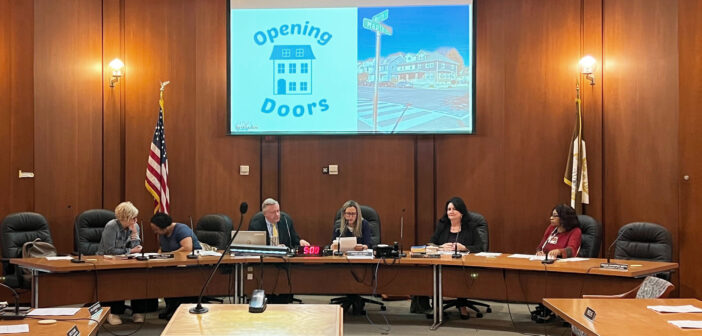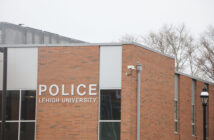Bethlehem’s Community Development Committee met on Sept. 26 to cover the city’s 2023 Strategic Plan to Address Homelessness: A Built Solution and the city’s Comprehensive Housing Strategy.
Members of the community were welcomed into the Town Hall Rotunda to listen to a presentation, titled ‘Opening Doors,’ about the city’s progress toward a permanent, year-round homeless shelter and other initiatives related to the affordable housing crisis.
The plan was presented by multiple members of Bethlehem city government, including Mayor J. William Reynolds; Laura Collins, director of community and economic development; and Sara Satullo, deputy director of community development.
Reynolds said the main goal of the plan is to provide stability and improve the overall housing system including the city’s service providers.
He said people want to live in Bethlehem, but the housing supply has not kept up with this demand.
“Across Northampton County, the rental vacancy rate in 2018 was (about) 7%,” Reynolds said. “Now, across the county, it’s (about) 2%, which is just an unbelievable reduction in supply over the last several years.”
Collins said the city has updated the 2023 Point in Time Count, and the number of chronically homeless families in Bethlehem has increased.
The total number of individuals experiencing homelessness in Northampton County — sheltered and unsheltered — went from 154 people in 2021 to 239 people in 2023, according to the Point in Time Count.
Collins said stories from the department’s partners in the school district about homelessness occurrences, including students coming into school having spent the night in a car with their family, are “alarmingly prevalent.”
“We see and hear every day, now even more so than we did a year ago, about the lived experiences of people [experiencing homelessness]in our community,” Collins said.
She said there is no one-size-fits-all solution to affordable housing, but the plan is focused on the lowest-income and most burdened people who are unsheltered or in transitional or supportive housing.
The plan adds resilience and sustainable public support to the system, she said, and its overarching theme is that affordable housing both helps prevent homelessness and helps people transition out of it.
Collins said the first of five recommendations outlined in the plan is to provide a year-round, low-barrier emergency shelter, and the city began looking into the project’s feasibility this year.
Based on existing demand — from interviews with service providers and individuals experiencing homelessness, Collins said they know an ideal shelter would have at least 15 non-congregate rooms, 10 family-sized units and 25 congregate emergency shelter beds.
She said a permanent, year-round shelter would address the growing need for housing and the need for stability. The department has begun looking into a physical location for the shelter.
In terms of funding, Satullo said there is $2 million allocated in the city budget by Bethlehem City Council and $1.4 million approved by the U.S. Department of Housing and Urban Development through the HOME-ARP Program for non-congregate sheltering, but additional funding will be necessary based on the city’s cost estimates.
Satullo said the department conducted interviews with 21 internal and external partners to gain an understanding of the existing services landscape. They also surveyed 107 individuals who were experiencing homelessness or seeking services to understand their circumstances.
“All of this information and data that we’ve collected through this planning process has given us a really strong plan that we can use to apply for more funding, attract donors and partners, and hopefully then get a sustainable shelter open that will be able to operate long term,” Satullo said.
Reynolds said the city needs to understand trends driving the housing crisis before allocating financial resources over the next five years.
“We needed to understand what is going on, where it’s going on, and how deep those struggles are,” Reynolds said. “We want to understand the experiences of our citizens most affected by the housing crisis.”
The Strategic Plan to Address Homelessness: A Built Solution will have a “Phase Two” meeting on Oct. 10, which will cover the results of their affordable housing study.






Comment policy
Comments posted to The Brown and White website are reviewed by a moderator before being approved. Incendiary speech or harassing language, including comments targeted at individuals, may be deemed unacceptable and not published. Spam and other soliciting will also be declined.
The Brown and White also reserves the right to not publish entirely anonymous comments.